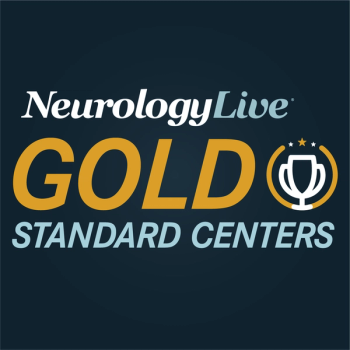
Three (20%) patients with Dravet syndrome had increases in seizure frequency after the first vaccine dose; however, no such increase was observed after the second dose.

Marco Meglio, Assistant Managing Editor for NeurologyLive, has been with the team since October 2019. Follow him on Twitter @marcomeglio1 or email him at [email protected]

Three (20%) patients with Dravet syndrome had increases in seizure frequency after the first vaccine dose; however, no such increase was observed after the second dose.

An abnormal composite outcome of death or disability at age 18 to 22 months was found in 46% of those who had seizures during rewarming compared with 25% of those without seizures at rewarming.

Vocal cord edema, which was observed in 100% of patients with cluster headache, should continue to be explored in research settings, according to the study authors.

ALSFRS-R and FVC values were stable after cell therapy during the 3-month follow-up; however, the scores and values significantly decreased after 6 months of treatment. The data, the authors noted, warrant future assessments in ALS.

Rates of infection or serious infection with satralizumab in the overall treatment period were not higher than those on placebo in the double-blind period and did not increase over time.

In total, 72% of responders reported spasticity as a top 5 most problematic symptom, with 17% ranking it as the single most difficult symptom of MS to manage.

All told, 48% of patients with MS reported that their most common primary person for guidance on cannabis use in MS was themself or no one, followed by a dispensary professional and MS physician.

The professor of neurology at the NYU Grossman School of Medicine provided his thoughts on the VIOLA study and the importance of monitoring cell response of post-vaccinated patients with MS on DMTs.

The company is planning to enroll patients in a phase 3 head-to-head study comparing donanemab to aducanumab (Aduhelm; Biogen) to assess superiority of brain amyloid clearance.

Years of built-up trust in the community has enabled Montefiore’s Stern Stroke Center physicians to understand more about how stroke affects multicultural communities and to break down existing barriers to care.

In responding to complex cognitive tasks, the insomnia group had slower and more variable response latencies, produced fewer correct responses, and had more errors than normal sleepers.

Jeffrey Bennett, MD, PhD, professor of neurology, University of Colorado, discussed his presentation at ECTRIMS involving the relationship of B-cell depletion and improved outcomes in patients treated with inebilizumab.

The trial provided Class IV evidence that VY-AADC01 and the associated surgical delivery procedure were well-tolerated in patients aged 40 to 70 years with moderately advanced Parkinson disease.

Just about two-thirds of patients remained on cenobamate throughout the entire analysis period and almost 40% had complete seizure reduction for at least 12 consecutive months at some time during the study.

Investigators found that women with early-onset myasthenia gravis display distinct clinical features in contrast with men with the same condition, who are more like patients with late-onset MG of both sexes.

The director of the Mellen Center for MS Treatment and Research at Cleveland Clinic discussed the realistic outlook of mesenchymal stem cells and other approaches to progressive MS.

William B. Young, MD, codirector of Inpatient Program at Jefferson Headache Center, discussed how the clinical and patient communities can squash misguided migraine stigmas.

Two hours post-treatment with the remote electrical neuromodulation device resulted in the improvement of nausea, photophobia, phonophobia, and functional ability.

The primary pharmaceutical options suggested by national guidelines were considered effective by only 13.8% and 14.9% of the patients with persistent idiopathic facial pain.

Treatment of ALS with tofersen resulted in differences in total cerebrospinal fluid SOD1 protein and neurofilament light chain, both markets of target engagement and neuronal degeneration.

An indirect comparison study evaluated relative treatment effects of eculizumab (Soliris; Alexion), inebilizumab (Uplizna; Horizon), and satralizumab (Enspryng; Genentech), the 3 FDA-approved options for NMOSD.

Roderick Spears, MD, FAHS, FAAN, professor of neurology, University of Pennsylvania, discussed the need to raise awareness of migraine and how the community can build upon the progress made.

The treatment effect observed from nabiximols (Sativex; GW Pharmaceuticals) was significant at all 1-week time points over the course of the 12-week study.

Data from the EXPAND trial show that after 12 months of treatment, changes on retinal nerve fiber layer thickness favored those on siponimod rather than the placebo group.

In data presented at ECTRIMS 2021, from years 1-5, the proportions of patients with relapsing multiple sclerosis achieving NEDA-3 status ranged from 63%to 75%.

The registered dietitian at Ann & Robert H. Lurie Children’s Hospital of Chicago provided knowledge on the how and why diets are constructed for patients with epilepsy.

In the cohort of 14 patients with preoperative impulsive and compulsive behavior burden, 6 patients demonstrated clinically relevant improvement on QUIP-RS, while 1 worsened and 7 remained stable.

Investigators observed a significant difference in the hazard ratio change on NPI apathy score within the first 100 days, suggesting an early treatment effect.

The pivotal phase 3 GRADUATE 1 and 2 trials will evaluate the effect of gantenerumab on amyloid load and downstream biomarkers of disease progression in patients with early Alzheimer disease.

Gennero Pagano, MD, MSc, PhD, expert medical director, Roche, provided thoughts on the investigational agent prasinezumab, overall Parkinson drug development, and MDS Virtual Congress.